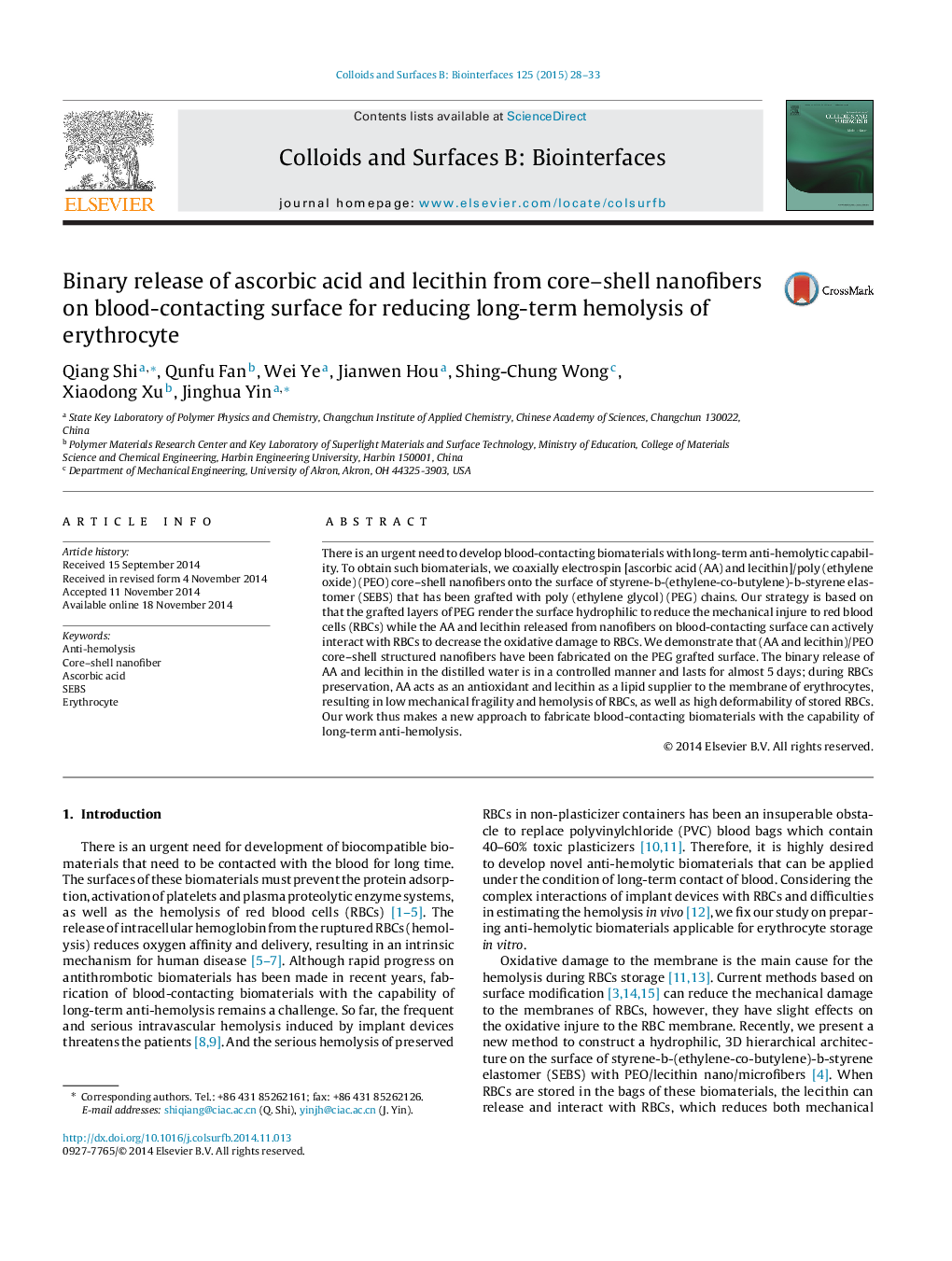| کد مقاله | کد نشریه | سال انتشار | مقاله انگلیسی | نسخه تمام متن |
|---|---|---|---|---|
| 599563 | 1454279 | 2015 | 6 صفحه PDF | دانلود رایگان |
• The blood-contacting surface was constructed by coaxial electrospinnig of (ascorbic acid and lecithin)/PEO core–shell nanofibers onto the surface of PEG-grafted SEBS.
• Ascorbic acid and lecithin could release from the nanofibers and interact with erythrocyte to reduce oxidation and lipid loss of the stored erythrocyte, resulting in low mechanical fragility and hemolysis of stored erythrocyte.
• Our work paved new way to fabricate biomaterials with the capability of long-term anti-hemolysis.
There is an urgent need to develop blood-contacting biomaterials with long-term anti-hemolytic capability. To obtain such biomaterials, we coaxially electrospin [ascorbic acid (AA) and lecithin]/poly (ethylene oxide) (PEO) core–shell nanofibers onto the surface of styrene-b-(ethylene-co-butylene)-b-styrene elastomer (SEBS) that has been grafted with poly (ethylene glycol) (PEG) chains. Our strategy is based on that the grafted layers of PEG render the surface hydrophilic to reduce the mechanical injure to red blood cells (RBCs) while the AA and lecithin released from nanofibers on blood-contacting surface can actively interact with RBCs to decrease the oxidative damage to RBCs. We demonstrate that (AA and lecithin)/PEO core–shell structured nanofibers have been fabricated on the PEG grafted surface. The binary release of AA and lecithin in the distilled water is in a controlled manner and lasts for almost 5 days; during RBCs preservation, AA acts as an antioxidant and lecithin as a lipid supplier to the membrane of erythrocytes, resulting in low mechanical fragility and hemolysis of RBCs, as well as high deformability of stored RBCs. Our work thus makes a new approach to fabricate blood-contacting biomaterials with the capability of long-term anti-hemolysis.
Figure optionsDownload as PowerPoint slide
Journal: Colloids and Surfaces B: Biointerfaces - Volume 125, 1 January 2015, Pages 28–33
